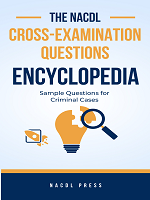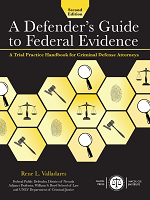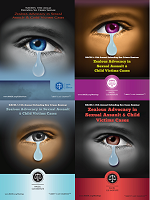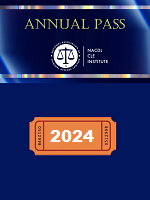Access to The Champion archive is one of many exclusive member benefits. It’s normally restricted to just NACDL members. However, this content, and others like it, is available to everyone in order to educate the public on why criminal justice reform is a necessity.
In 2016 a jury convicted Talman Harris of several charges related to penny stock fraud in federal district court in Cleveland, Ohio.1 His crimes stemmed from a scheme in which he, along with co-conspirators, received undisclosed commissions for recommending shares of companies run by Zirk de Maison.
Harris subsequently appealed his conviction to the U.S. Court of Appeals for the Sixth Circuit, raising several issues. This article will examine only one — extraneous influence on a juror. On appeal, Harris asserted that the trial judge abused his discretion by failing to hold a Remmer-type hearing after he informed the court about improper influence on a juror via LinkedIn, the social networking site for professionals.
In Remmer v. United States, the petitioner discovered post-trial that some unknown person had contacted the jury foreman and told him that he could profit by returning a favorable verdict for the petitioner.2 The prosecution, through the FBI, investigated the claim and discovered that the statement had been made in jest. However, no one at the time of trial ever informed the petitioner of this fact.
On appeal, Remmer argued that this extraneous influence on the jury foreman merited a new trial or at least a hearing. The trial court disagreed, as did the Ninth Circuit. The Supreme Court, however, sided with petitioner, finding that the trial court “should not decide and take final action ex parte.”3 Instead, the Supreme Court determined that the trial court should have held a “hearing with all interested parties permitted to participate.”4 This procedure has now become known as a “Remmer hearing.”
Fast forward more than 60 years to the digital age when extraneous influences on jurors are now more likely to occur online. What recourse do parties have? The answer to this question may rest with United States v. Harris.
In Harris, appellant received an email notification from LinkedIn that other users had recently viewed his LinkedIn profile. Appellant opened the email the following day, which coincided with the jury’s guilty verdict. The email revealed that one viewer was Christian Goleno, a student at Youngstown State University. According to LinkedIn, Goleno viewed the profile sometime between August 28 and September 12, 2016. Appellant’s jury was empaneled from August 24 to September 7, 2016.
After further online research, appellant discovered that Goleno was the live-in girlfriend of Juror 12, one of the jurors at appellant’s trial. Appellant and Goleno had no prior interaction up to this point.
Upon discovering the connection between Goleno and Juror 12, appellant requested a Remmer hearing to determine whether Juror 12 had been exposed to prejudicial extraneous information during trial. The trial court denied the motion, finding that appellant never demonstrated that Goleno “had an actual communication [about the trial] with Juror Number 12.”5 In overruling the trial court, the Sixth Circuit found that appellant had presented a colorable claim of extraneous influence on a juror. As a result, the appellate court vacated the conviction and remanded the case for a Remmer hearing.
Harris raises an interesting twist on an age-old problem: extraneous influence on jurors. Here, the trial court denied a Remmer hearing because the appellant could not prove that Juror 12 actually discussed the case with Goleno or that she relayed derogatory information to him about appellant. The trial court ultimately concluded that Juror 12 followed the court’s instructions about not discussing the case and that Goleno most likely discovered appellant’s LinkedIn page on her own after going to the court’s public website and finding information about the trial.
In contrast, the appellate court found that appellant presented credible evidence that Goleno discussed the trial with Juror 12 and most likely found appellant’s LinkedIn profile by searching Google. Any Google search of the appellant would also reveal prejudicial information that had been precluded at trial. While both the trial and appellate courts made assumptions about Juror 12 and Goleno, the appellate court’s assumptions seem more plausible.
What is the takeaway from Harris? When in doubt about extraneous influence on a juror, trial courts, at least in the Sixth Circuit, should err on the side of holding a Remmer hearing. What about for defense attorneys? Investigate jurors.
In the digital age, there is a wealth of information about jurors online.6 Defense attorneys should use that information to their advantage.7 While attorneys do not have a right to conduct online investigations of jurors, most judges permit the practice.8 Furthermore, the American Bar Association and state bar organizations have given their stamp of approval on juror investigations.9 Attorneys must avoid contacting jurors ex parte, even through third-party social media providers, which is what likely occurred in Harris.10 Also, attorneys should be aware of the consequences of “sandbagging” (i.e., waiting until after receipt of a verdict to disclose juror misconduct that was known prior to or during trial).11 Yet even with these caveats, the advantages of jury investigations definitely outweigh the disadvantages, especially when it comes to discovering extraneous influences on jurors.
Notes
- United States v. Harris, 881 F.3d 945 (6th Cir. 2018).
- Remmer v. United States, 347 U.S. 227 (1954).
- Id. at 229.
- Id. at 230.
- Harris, 881 F.3d at 953.
- Thaddeus Hoffmeister, Investigating Jurors in the Digital Age: One Click at a Time, 60 U. Kan. L. Rev. 611 (2012).
- Thaddeus Hoffmeister, Google, Gadgets and Guilt: Juror Misconduct in the Digital Age, 83 U. Colo. L. Rev. 409 (2012).
- Thaddeus Hoffmeister, Applying the Rules of Discovery to Information Uncovered About Jurors, 59 UCLA L. Rev. Discourse 28 (2011).
- NYCLA Comm. on Prof’l Ethics, Formal Op. 743 (2011) and ABA Formal Op. 466 (2014) (lawyer reviewing juror’s internet presence).
- N.Y.C. Bar Ass’n, Formal Op. 2012-2 (2012) (jury research and social media).
- Thaddeus Hoffmeister, U.S. v. Daugerdas: A Cautionary Tale About Investigating Jurors, The Champion, December 2012, at 61.
About the Author
Thaddeus Hoffmeister is a professor at the University of Dayton School of Law and the editor of a blog discussing juries.
Professor Thaddeus Hoffmeister
University of Dayton School of Law
Dayton, Ohio
937-229-3810
www.juries.typepad.com
hoffmeister9@hotmail.com






